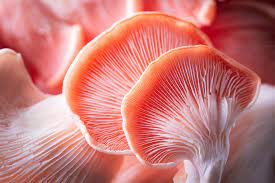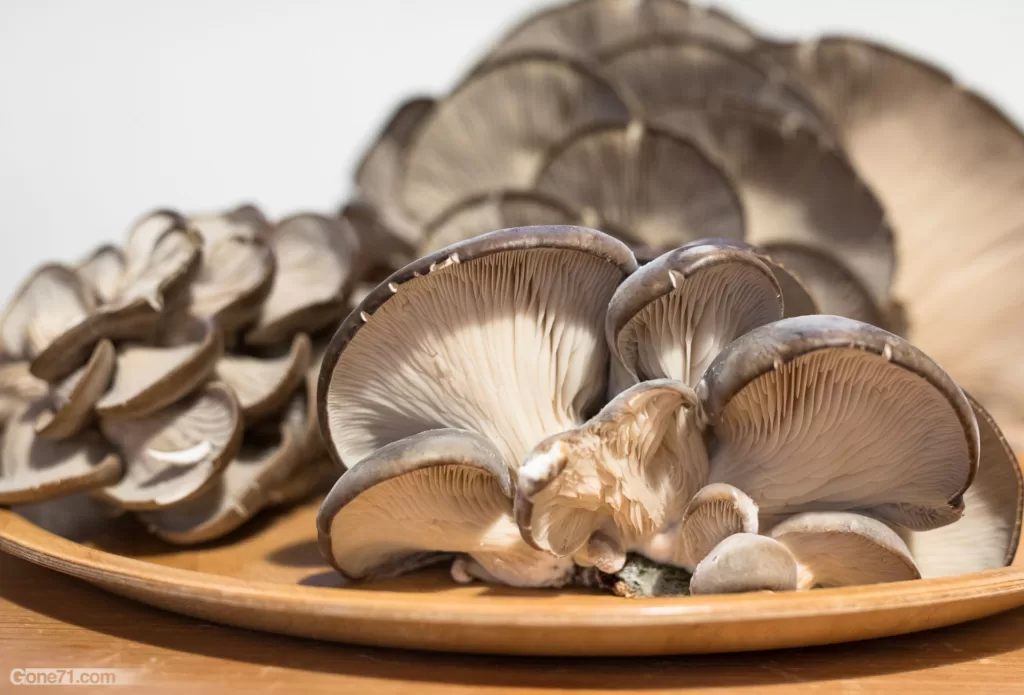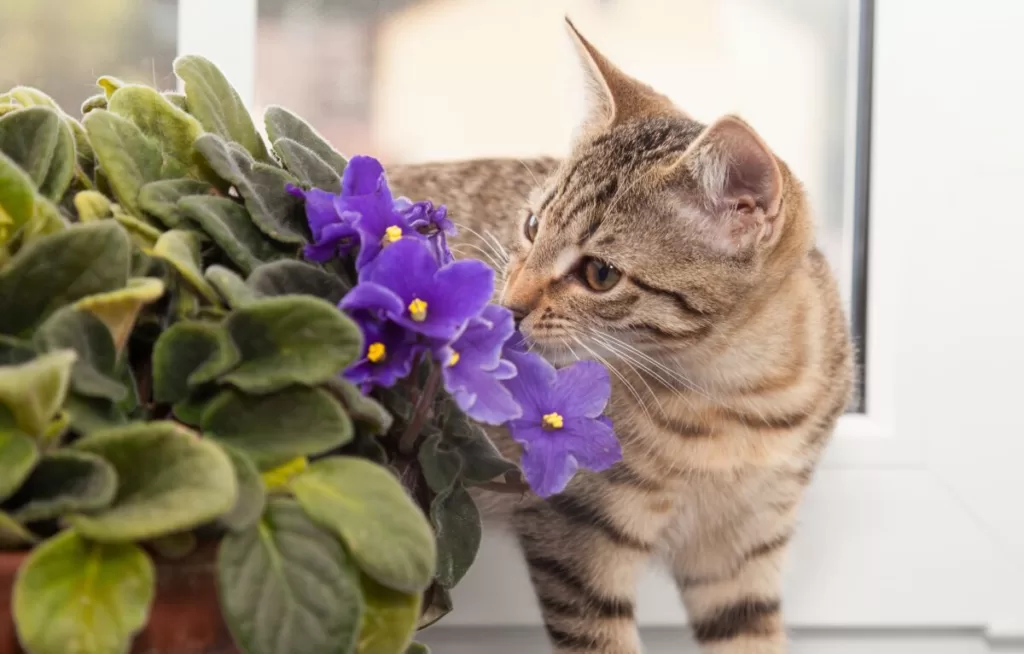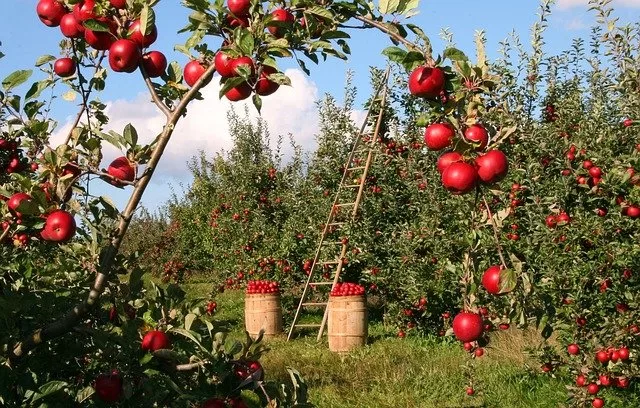Growing oyster mushrooms at home can be a fun and rewarding experience for beginners. Not only are oyster mushrooms delicious and nutritious, but they are also relatively easy to grow compared to other mushroom varieties. In this beginner’s guide, we will walk you through the process of growing oyster mushrooms at home, from the benefits of growing your own mushrooms to the required materials and setup, the growing process, and troubleshooting common problems.
Benefits of Growing Oyster Mushrooms at Home
Oyster mushrooms are a popular choice for home cultivation for several reasons. First and foremost, oyster mushrooms are delicious and versatile. They have a mild, nutty flavor and a tender, meaty texture that makes them a great addition to a wide range of dishes, from stir-fries to soups to omelets. Oyster mushrooms are also packed with nutrients, including protein, fiber, B vitamins, and minerals like copper, zinc, and selenium.
Growing your own oyster mushrooms at home is also cost-effective. Store-bought mushrooms can be quite expensive, especially if you want to buy organic or specialty varieties. By growing your own mushrooms, you can save money and have fresh mushrooms on hand whenever you need them. Plus, growing oyster mushrooms is a great way to reduce your environmental impact since you won’t have to rely on mushrooms that have been shipped from far away.
Required Materials and Setup
To grow oyster mushrooms at home, you will need a few key materials and pieces of equipment. Here is a list of the basic supplies you will need to get started:
- Oyster mushroom spawn: This is the “seed” that will be used to inoculate your growing medium.
- Growing medium: Oyster mushrooms are typically grown on a substrate made from a mixture of straw and other organic materials like sawdust or coffee grounds.
- Container: You will need a container to hold the growing medium and spawn. Plastic bags or plastic containers with lids work well.
- Water: You will need to keep the growing medium moist throughout the growing process.
- Sterilization equipment: Oyster mushroom cultivation requires sterile conditions to prevent contamination. You will need to sterilize your growing medium and any equipment you use.
- Gloves: You will want to wear gloves to prevent contamination and protect your hands.
- Mask: A mask can help prevent the inhalation of harmful spores or bacteria.

Preparing the Growing Medium
Once you have your supplies, you will need to prepare your growing medium. Oyster mushrooms are typically grown on a substrate made from a mixture of straw and other organic materials like sawdust or coffee grounds. To prepare the substrate, you will need to:
- Chop the straw into small pieces and soak it in water for 24 hours.
- Drain the water and spread the straw out to dry.
- Mix the straw with other organic materials like sawdust or coffee grounds to create a nutrient-rich substrate.
- Sterilize the substrate using a pressure cooker or other sterilization equipment.
The Growing Process
Now that you have your growing medium prepared, it’s time to inoculate it with oyster mushroom spawn. Here’s how to do it:
- Break the spawn into small pieces and mix it with the growing medium.
- Transfer the mixture to your container and cover it with a lid or plastic bag.
- Poke a few small holes in the container to allow for air flow.
- Place the container in a warm, dark place, like a closet or basement.
- Check on the container daily and mist the growing medium with water as needed to keep it moist.
After a few days, you should start to see the mycelium spreading through the substrate. This is a good sign that your mushrooms are growing.
Now that you have prepared the growing medium and inoculated it with oyster mushroom spawn, it’s time to start the growing process. In this section, we will discuss the ideal growing conditions, the different stages of mushroom growth, and how to harvest your oyster mushrooms.
Ideal Growing Conditions
Oyster mushrooms require specific growing conditions to thrive. The ideal temperature for growing oyster mushrooms is between 60 and 75°F (15-24°C), and the humidity level should be around 90%. The lighting should be indirect and diffused, and it’s best to keep the growing area in a dark location. It’s also important to keep the growing area well-ventilated to prevent the buildup of carbon dioxide.
Different Stages of Mushroom Growth
After inoculating the growing medium with oyster mushroom spawn, the mycelium will begin to colonize the substrate. This is when the fungus begins to break down the organic matter in the substrate and convert it into food for the developing mushrooms.
Once the mycelium has colonized the substrate, small pinheads will start to appear on the surface of the growing medium. These pinheads will quickly grow into fully formed mushrooms, which can be harvested when they reach their mature size.
Harvesting Oyster Mushrooms
Oyster mushrooms are ready to harvest when they are fully grown, but not yet mature. You can tell that they are ready by their size and shape. Oyster mushrooms are typically harvested when the caps are between 2 and 4 inches in diameter and are still convex in shape. If the caps have started to flatten out, they may be overripe and less flavorful.
To harvest oyster mushrooms, gently twist and pull the mushrooms from the substrate. Avoid using a knife to cut the mushrooms, as this can damage the mycelium and reduce future yields. Once you have harvested your mushrooms, you can store them in the refrigerator for up to a week.

Troubleshooting Common Problems
Even with the best preparation and care, you may encounter some problems when growing oyster mushrooms at home. In this section, we will discuss some common issues that may arise and how to troubleshoot them.
Contamination
One of the most common problems when growing oyster mushrooms is contamination. This can happen when unwanted fungi or bacteria infiltrate the growing medium and compete with the oyster mushroom mycelium. Signs of contamination include strange colors, bad odors, and fuzzy or slimy growth on the substrate.
To prevent contamination, it’s essential to maintain a sterile growing environment. This means washing your hands thoroughly, using sterilized equipment and materials, and avoiding drafts and other sources of contamination. If you do notice signs of contamination, you may need to start over with a new batch of growing medium and spawn.
Low Yields
If you’re not getting the yields you were hoping for, there may be a few reasons why. One possible cause is insufficient moisture, which can cause the mushrooms to dry out and stop growing. Another possibility is inadequate ventilation, which can lead to a buildup of carbon dioxide and other gases that can inhibit growth.
To improve yields, make sure that the growing medium is moist but not waterlogged, and that the growing area is well-ventilated. You may also want to experiment with different types of substrates, as some oyster mushroom strains prefer certain types of organic matter over others.
Growing oyster mushrooms at home can be a fun and rewarding experience, and with the right preparation and care, even beginners can enjoy a bountiful harvest. In this article, we’ve covered the benefits of growing oyster mushrooms at home, the materials and setup required, the growing process, and how to troubleshoot common problems.
Despite being relatively easy to grow, oyster mushrooms can sometimes face problems during the growing process. It’s essential to know how to identify and solve these issues to ensure a successful harvest. Here are some common problems you may encounter while growing oyster mushrooms at home and how to troubleshoot them:
Contamination is one of the most common issues faced by mushroom growers. It can occur when bacteria, mold, or other fungi infect the growing medium or spawn. You can identify contamination by observing the growth on the substrate. If you see any strange colors or smells, it’s likely that your mushrooms are contaminated. To prevent contamination, ensure that your equipment and workspace are clean and sterile. Also, make sure to use high-quality spawn and maintain proper environmental conditions, such as humidity and temperature.
Low yields can be due to several reasons, such as inadequate ventilation, low humidity, or incorrect temperatures. To improve yields, ensure that you’re following the right environmental conditions for oyster mushrooms. Providing adequate ventilation, keeping the growing medium moist, and maintaining the proper temperature can significantly improve your yields.
Poor fruiting: If your oyster mushrooms are not fruiting correctly, it could be due to insufficient light or inadequate nutrients. Ensure that your growing medium has enough nutrients and that you’re providing enough light for your mushrooms to grow. You can also try increasing the carbon dioxide levels in your growing area, which can encourage fruiting.
Growing oyster mushrooms at home is an excellent way to produce your food and experiment with different recipes. With the right materials, setup, and growing process, you can have a healthy and sustainable source of delicious mushrooms all year round. While there may be some obstacles, don’t be discouraged. By troubleshooting and adjusting your growing conditions, you can overcome these challenges and achieve a bountiful harvest. So, go ahead and try growing oyster mushrooms at home today!
When selecting a growing medium for oyster mushrooms, it’s important to keep in mind that they require a substrate that is high in cellulose and low in lignin. This is why a mixture of straw and other organic materials like coffee grounds, sawdust, and corn cobs is commonly used.
Before preparing the substrate, it’s important to sterilize it to prevent contamination from bacteria and other fungi. This can be done by steaming or boiling the substrate, or by using a pressure cooker.
Once the substrate has been sterilized, it can be mixed with oyster mushroom spawn. Spawn is simply a substrate that has been inoculated with oyster mushroom mycelium. It can be purchased online or from a local supplier.
To inoculate the substrate, first prepare a clean work area and sterilize any tools that will be used. Then, mix the spawn with the substrate thoroughly, making sure that it is evenly distributed throughout.
Once the substrate has been inoculated, it’s time to transfer it to the growing container. A plastic bag with small holes punched in it can be used, or a plastic container with a lid and ventilation holes can also work well.
Place the growing container in a dark, warm location and monitor the humidity level. Oyster mushrooms thrive in high humidity, so it may be necessary to mist the container periodically.
After a few days, the mycelium should start to colonize the substrate. This is the vegetative growth stage, during which the mycelium consumes the nutrients in the substrate and prepares to fruit.
As the mycelium grows, it will eventually form pinheads or primordia. These will eventually develop into mature mushrooms.
To encourage fruiting, it’s important to maintain the appropriate temperature and humidity levels. Oyster mushrooms typically fruit best in temperatures between 60-75°F and with a relative humidity of 80-90%.
Once the mushrooms have reached maturity, they can be harvested by gently twisting or cutting them from the substrate. The harvested mushrooms can be used immediately or stored in the refrigerator for up to a week.
How long does it take to grow oyster mushrooms at home?
- It typically takes 2-3 weeks for oyster mushrooms to grow from inoculation to harvest. However, the exact timing depends on several factors such as the growing conditions, the type of oyster mushroom, and the growing medium.
Can I reuse the substrate for growing oyster mushrooms?
- Yes, you can reuse the substrate for growing oyster mushrooms multiple times. However, it’s important to sterilize the substrate properly between uses to prevent contamination and maintain the quality of the mushrooms.
Do I need a special room or environment to grow oyster mushrooms?
- No, you don’t need a special room or environment to grow oyster mushrooms. They can be grown in a variety of settings, including indoors or outdoors, as long as the growing conditions are favorable.
Can I grow oyster mushrooms without a growing kit?
- Yes, you can grow oyster mushrooms without a growing kit. All you need is oyster mushroom spawn, a growing medium such as straw, and a container to hold the substrate.
Can oyster mushrooms grow in coffee grounds?
- Yes, oyster mushrooms can be grown in coffee grounds. Coffee grounds are a great source of nutrients for oyster mushrooms and can be used as a growing medium.
How do I know when my oyster mushrooms are ready to harvest?
- Oyster mushrooms are ready to harvest when the caps are fully grown and the edges start to turn upward. You can also tell by the color of the gills, which will change from white to gray or light brown.
How do I store oyster mushrooms after harvesting?
- Oyster mushrooms should be stored in the refrigerator in a paper bag or container for up to a week. You can also freeze oyster mushrooms for long-term storage.
Can oyster mushrooms be grown outdoors?
- Yes, oyster mushrooms can be grown outdoors as long as the climate and growing conditions are suitable. They thrive in temperatures between 55-65°F and high humidity.
How much light do oyster mushrooms need to grow?
- Oyster mushrooms don’t require much light to grow. In fact, too much light can inhibit their growth. A low to moderate light setting is sufficient.
What are some common pests and diseases that affect oyster mushrooms?
Common pests that affect oyster mushrooms include mites, flies, and snails. Common diseases include green mold, bacterial blotch, and cobweb mold. Proper sterilization, cleanliness, and monitoring can help prevent and control these issues.







